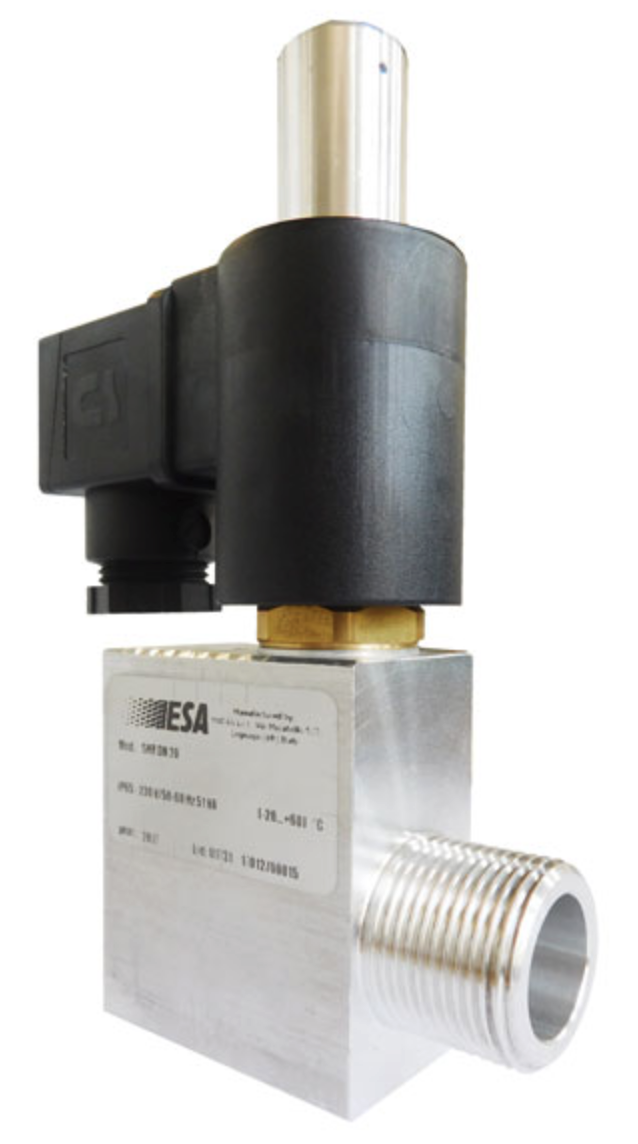A flame sensor is part of the safety chain, as required by NFPA86. The safe operation of an industrial furnace or oven requires us to prove flame is present precisely when we want it. Flame sensors are part of flame supervision. The use of flame sensors automates system response, leaving no room for ambiguity and limiting lapses in attention or judgement.
The flame sensor can tell us three things. First, flame is not present. Second, flame is present. Finally, the strength (or weakness) of the flame signal. When starting the combustion system, we require a flame sensor to confirm the burners are not already lit. While the system is active, we require the a flame sensor to confirm flame is present. While commissioning, troubleshooting, or tuning the burners, we may rely on the flame signal strength for indication of results.
Flame Present
If a flame sensor “sees” flame during the start up sequence but before the burner has been commanded to light, the system will fault. If we’re using a UV sensor, perhaps the UV tube needs a replacement. Or maybe the angle of the UV sensor has another burner in its line of sight. When using a flame rod, it’s possible the sensing threshold of the flame safety device is too low, and some small electrical current is present at the flame rod despite insulation.
Flame Not Present
If a flame sensor loses flame signal during burner operation, the system will fault. This can be at any point during operation, especially during start up. Your flame safety device will allow some seconds for ignition; if no flame signal is reported during this trial, the system will fault. If there is an interruption in the flame signal while the burner is lit, and that interruption is longer than the failure response time allowed by the flame safety device, the system will fault.
In these cases, it’s possible the issue is with the flame sensor. Maybe the flame rod is no longer in contact with the flame. Or maybe the UV tube needs replacement. But the cause of this type of fault might be due to something else something else. A break in an ignition cable can cause an intermittent signal, or debris in the gas line might reduce the gas pressure to a level where combustion is unsustainable.
Types of flame sensors
The most common types of flame sensors are flame rods and UV detectors.
A flame rod must be in contact with the flame. Single-electrode systems may use one electrode rod for both ignition and sensing of the flame. Dual-electrode systems use one electrode for ignition and the other for flame sensing.
Because the flame rod must be in contact with the flame, it’s important to use a material that retains its conductive properties at high temperatures. It’s also important to pay attention to drooping. If a flame rod droops due to exposure to temperature and the influence of gravity, it may exit the flame, and lose the flame signal.
A flame rod is a robust solution but it has its shortcomings. Increases in system pressure, intended to push the burner’s limits, can cause the flame to “walk” out of range of the flame rod. Accumulated soot or rust can reduce the conductive properties of the flame rod, causing it to report a lower flame signal, potentially resulting in a fault. Drooping flame rods, or the accumulation of soot and/or rust can sometimes correctable through mechanical intervention, such as removing the rod to straighten or clean it with steel wool.
UV Detectors
A UV detector can “see” ultraviolet radiation emitted from a flame. The installation of these devices aims the line of sight is directly at the specific flame they’re supervising. Without being careful, you can detect flame from an adjacent burner, or one on the other side of the furnace.
UV detectors contain solid-state electronics, so they have a lower temperature threshold than a flame rod. You may need to stand them off from the furnace, or supply cooling air to prevent damage. In addition, a UV detector is not applicable in an environment where water vapor is present. Steam prevents the UV radiation from reaching the device.
Self-checking UV Detectors
A UV detector has the potential to fail “on,” which could result in an unsafe condition. Therefore, NFPA86 states UV detectors must cycle “off” at least once every twenty-four hours, to check their operation.
There are a great many applications where all the burners must be on during the entire process. This process could take significantly longer than twenty-four hours. In cases like this where UV is necessary, the solution is a “self-checking” UV detector.
A self-checking UV detector may contain a shutter and circuit for the purpose of creating a known “off” condition. The burner has permission continue firing during this check. The shutter is imposed between the flame and the sensor. If the “off” condition is not met, then the UV tube will fail “on,” in an unsafe state and requires replacement. The burner will fault, and the UV tube needs a replacement before the burner can be restart.
For Automation
Please visit olstrad.com to learn more about our automation processes!












